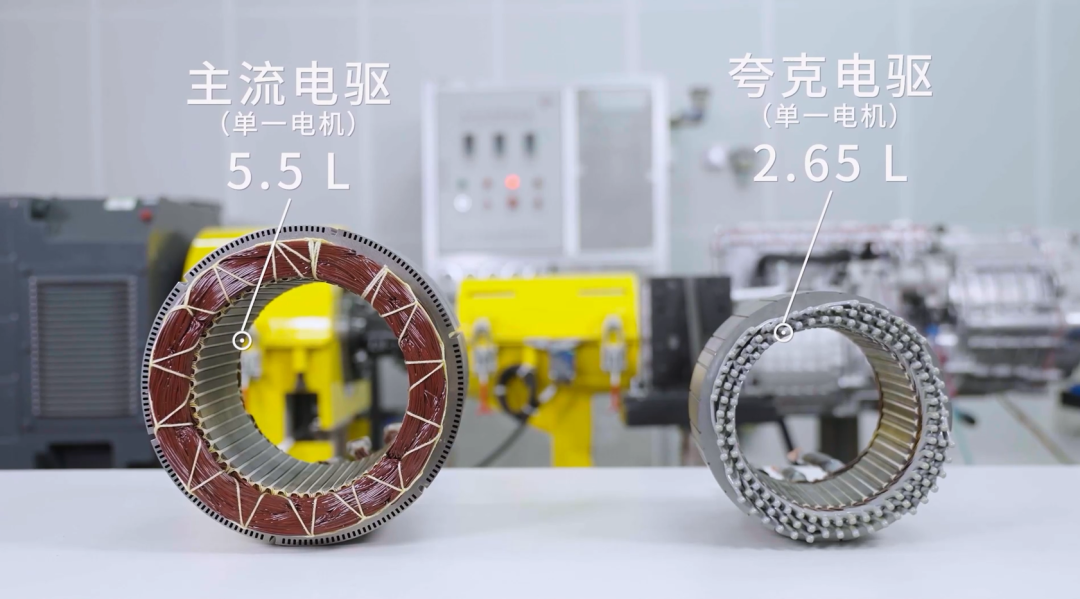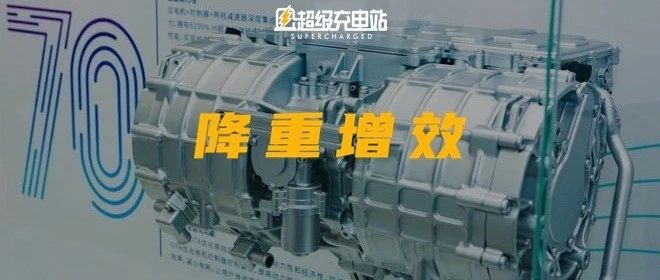Author: Dkp
In my childhood, I was obsessed with four-wheel drive cars, and the most important part back then was the motor. The copper wire on the motor must be hand-wrapped. Although I did not understand the principle, I saw senior students doing it, so I didn’t think much about it.
After working in the automotive media industry, my colleagues and I also joked: if everything is electrified in the future, do we need to hand-wrap the electric motor to make it look high-end?
Of course, reality is not that simple.
On March 2nd, Beijing time, Colin Campbell, the vice president of Tesla’s Powertrain Engineering, mentioned the technical path of Tesla’s next-generation permanent magnet drive motor. The next day, Eon announced the QuarkDrive system. While Tesla strives to reduce the proportion of rare earth raw materials to 0% to reduce costs, Eon chooses to improve motor efficiency performance.
QuarkDrive improves motor efficiency
Even as a semi-automotive industry practitioner, I rarely pay attention to one attribute of the motor — power density.
In the past 10 years of rapid development of new energy vehicles, the industry’s motor power density has increased from 2kw/kg to 6kw/kg, which means that under the same weight of the motor, its performance has been improved by three times or about three times the efficiency.

As we all know, as a core power component, the motor directly affects the vehicle performance, and the weight of the motor also has a direct impact on the entire vehicle. This is even more obvious for luxury pure electric vehicles equipped with two or even more motors.

Eon’s QuarkDrive has achieved a power density of 12Kw/kg.
This means that if we want a motor with 220Kw (300 horsepower), its weight is only 18.3kg. This weight is no problem for adults, but 300 horsepower is indeed the controllable limit for most drivers.
Of course, this is not a simple engineering project. Voltage upgrading corresponds to materials, processes, packaging, software, and also to handle the issue of motor power loss.Let’s talk about the technology behind Quark’s electric drive.
Three Core Technologies of Quark
Material science has always been the foundation of industrial production. In permanent magnet synchronous motors, iron core losses directly affect the motor performance. To improve the motor power, materials with better performance are needed. Therefore, Ai’an designed a “nanocrystalline-amorphous” alloy material and a corresponding mass production process.

Note that the iron core loss here does not refer to the “fining” of the iron core, but to the production of invalid heat when the motor is working.
Based on its microscopic properties, the cooling rate of nanocrystalline-amorphous material can reach as high as 1,000,000℃/s, which is 1,000 times faster than that of iron-based silicon steel materials. Therefore, its iron loss coefficient is much lower than that of electrical steel such as iron-based silicon steel. Official data shows that by using this as the iron core material, Quark’s electric drive can reduce motor iron core losses by 50%, improve motor operating efficiency to 97.5%, and achieve a maximum efficiency of 98.5%.

Do you remember the “hand-wound motor” mentioned at the beginning? Let’s talk about the relevant technology next. Quark electric drive uses Ai’an’s self-fused X-PIN flat wire stator technology and carbon fiber high-speed rotor technology.
Official data shows that in the case of reducing the volume by 25%, the electric drive power can be increased by more than 30%. Based on the advancement of motor technology, future products will become smaller, lighter, and have more diverse travel modes. The X-PIN carbon fiber high-speed motor technology has three unique national patents for platform winding schemes, which can realize multiple platform compatibility in the power range of 70kW-320kW and the torque range of 220-450Nm.
Compared with the previously popular HAIR-PIN process, X-PIN is considered an iteration based on it, mainly optimizing motor efficiency.
 The last technology introduced by Aiways in their Hyper SSR supercar is the 900V power module. This module, thanks to Aiways’ involvement in the SiC industry chain, has a maximum working voltage of 900V and a peak power of over 320kw, with an efficiency higher than 99.8%.
The last technology introduced by Aiways in their Hyper SSR supercar is the 900V power module. This module, thanks to Aiways’ involvement in the SiC industry chain, has a maximum working voltage of 900V and a peak power of over 320kw, with an efficiency higher than 99.8%.
By focusing on chip layout, current consistency, reduced switch-off delay and stacked power circuit design, along with innovative all-silver accurate low-temperature sintering technology, the SiC module circuit has been improved to reduce inductance by more than 50%, reduce thermal resistance by about 25%, increase current flow capacity by over 10%, and increase power cycling life by about 100%.
Moreover, the high voltage resistance, high power density, and high efficiency characteristics of silicon carbide are the core support of the 900V power module.
Interestingly, during Tesla’s Investor Day on March 2, the Powertrain Engineering Director, Colin Campbell, revealed that “the silicon carbide transistor I talked about in our next generation of power systems is a key component, but the part is expensive, (so) we have found a way to reduce its usage by 75% without affecting vehicle performance or efficiency.”
Aiways, taking a different technological path from industry pioneers, can bring different concepts and achievements, which I believe are worth looking forward to.
Furthermore, Aiways conveyed a message throughout the event that QuarkDrive is not limited to the automotive industry. Aiways gave examples in various industries, such as medical technology, where QuarkDrive can be used to create power prostheses for people with disabilities, making them capable of having normal mobility. Additionally, QuarkDrive technology can be used in the field of drone delivery to significantly improve payload and endurance in combination with AI technology.# Fulfilling lofty ideals requires support from reality.
Tesla’s visionary trilogy was once considered fanciful, but Tesla has gradually fulfilled most of its promises based on its ideals and technology. Therefore, the complaints about the third chapter of the trilogy are centered around “not enough details”, rather than “Musk blowing his own horn”.
Now, NIO needs a strong grip on reality.
Official data shows that NIO sold 30,086 vehicles in February, a year-on-year increase of 253% and a month-on-month increase of 195%. The cumulative sales from January to February were 40,292, a year-on-year increase of 64%. The outstanding sales performance of NIO cannot be denied, but upon closer inspection, its product matrix still lacks a main high-end model to showcase its technological strength. Therefore, the brand attributes still need to incorporate more technological appeal.
Compared with distant future visions, there is still much that NIO needs to do at present, such as making its cutting-edge products more marketable and thereby shaping a high-end brand image. NIO cannot “skip class” like Tesla did.
This article is a translation by ChatGPT of a Chinese report from 42HOW. If you have any questions about it, please email bd@42how.com.
